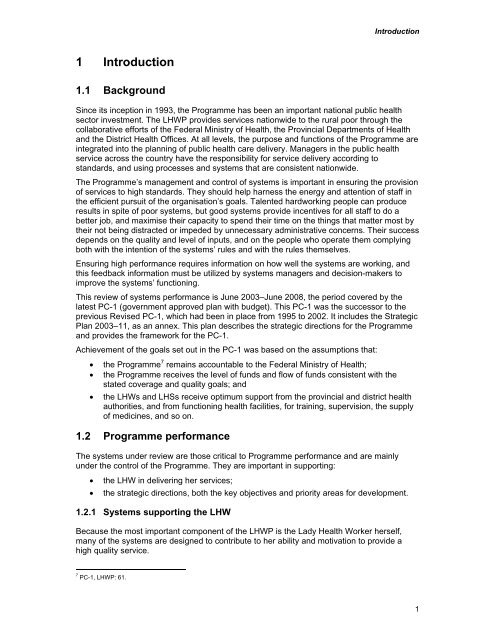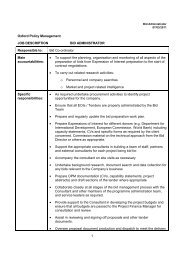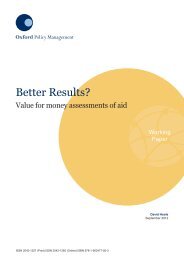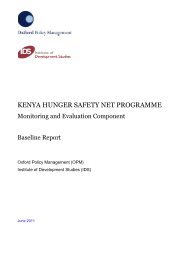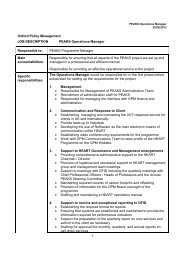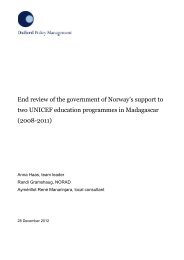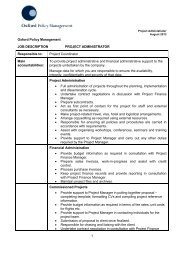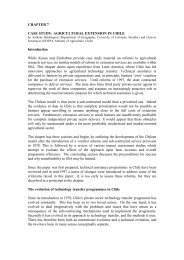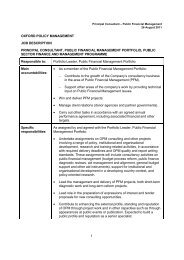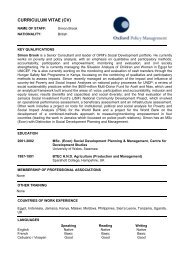LHW Systems Review - Oxford Policy Management
LHW Systems Review - Oxford Policy Management
LHW Systems Review - Oxford Policy Management
You also want an ePaper? Increase the reach of your titles
YUMPU automatically turns print PDFs into web optimized ePapers that Google loves.
Introduction1 Introduction1.1 BackgroundSince its inception in 1993, the Programme has been an important national public healthsector investment. The <strong>LHW</strong>P provides services nationwide to the rural poor through thecollaborative efforts of the Federal Ministry of Health, the Provincial Departments of Healthand the District Health Offices. At all levels, the purpose and functions of the Programme areintegrated into the planning of public health care delivery. Managers in the public healthservice across the country have the responsibility for service delivery according tostandards, and using processes and systems that are consistent nationwide.The Programme’s management and control of systems is important in ensuring the provisionof services to high standards. They should help harness the energy and attention of staff inthe efficient pursuit of the organisation’s goals. Talented hardworking people can produceresults in spite of poor systems, but good systems provide incentives for all staff to do abetter job, and maximise their capacity to spend their time on the things that matter most bytheir not being distracted or impeded by unnecessary administrative concerns. Their successdepends on the quality and level of inputs, and on the people who operate them complyingboth with the intention of the systems’ rules and with the rules themselves.Ensuring high performance requires information on how well the systems are working, andthis feedback information must be utilized by systems managers and decision-makers toimprove the systems’ functioning.This review of systems performance is June 2003–June 2008, the period covered by thelatest PC-1 (government approved plan with budget). This PC-1 was the successor to theprevious Revised PC-1, which had been in place from 1995 to 2002. It includes the StrategicPlan 2003–11, as an annex. This plan describes the strategic directions for the Programmeand provides the framework for the PC-1.Achievement of the goals set out in the PC-1 was based on the assumptions that:• the Programme 7 remains accountable to the Federal Ministry of Health;• the Programme receives the level of funds and flow of funds consistent with thestated coverage and quality goals; and• the <strong>LHW</strong>s and LHSs receive optimum support from the provincial and district healthauthorities, and from functioning health facilities, for training, supervision, the supplyof medicines, and so on.1.2 Programme performanceThe systems under review are those critical to Programme performance and are mainlyunder the control of the Programme. They are important in supporting:• the <strong>LHW</strong> in delivering her services;• the strategic directions, both the key objectives and priority areas for development.1.2.1 <strong>Systems</strong> supporting the <strong>LHW</strong>Because the most important component of the <strong>LHW</strong>P is the Lady Health Worker herself,many of the systems are designed to contribute to her ability and motivation to provide ahigh quality service.7PC-1, <strong>LHW</strong>P: 61.1


